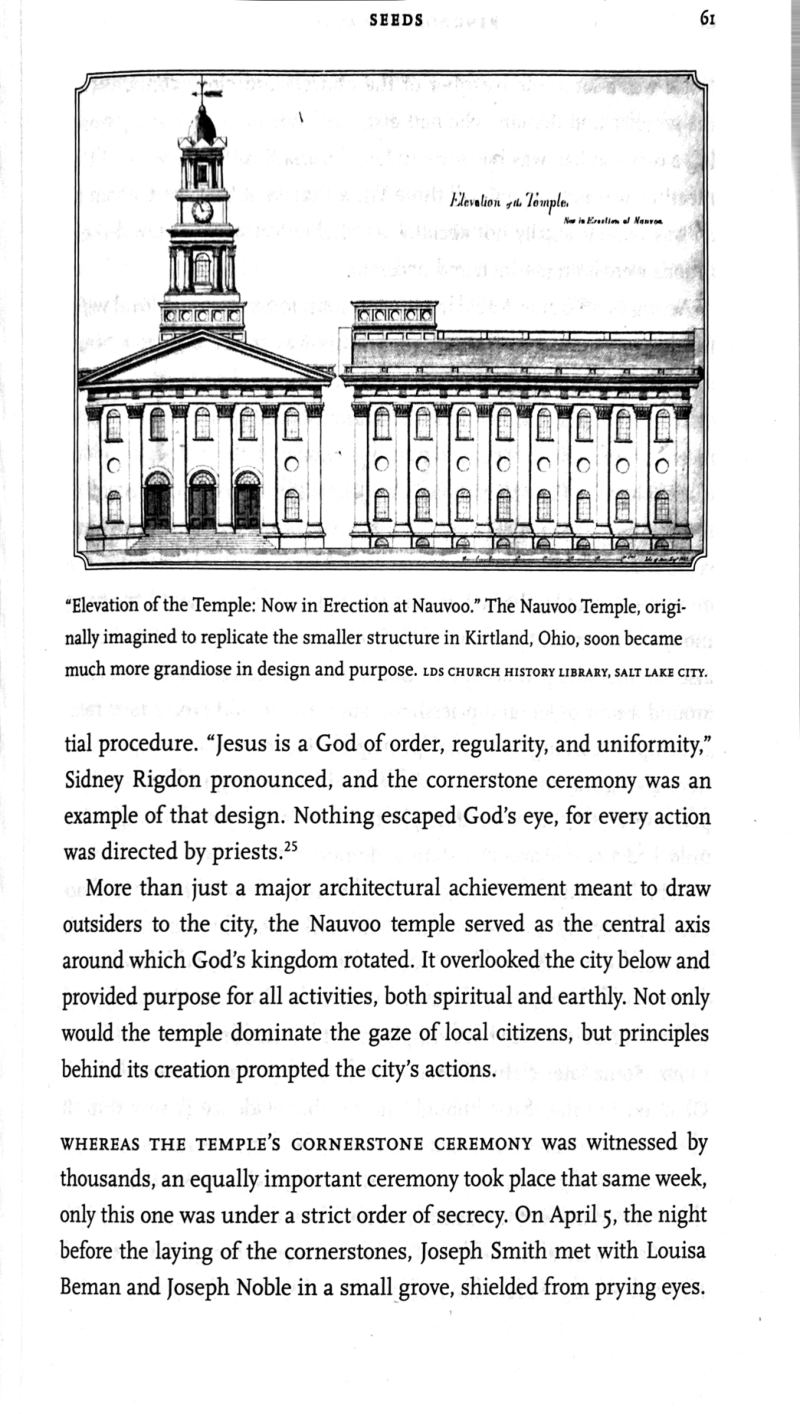Benjamin E. Park writes favoring Louisa Beaman as Joseph's first plural wife.
- Type
- Book
- Source
- Benjamin Park LDSDisaffected
- Hearsay
- DirectSecondary
- Reference
Benjamin E. Park, Kingdom of Nauvoo: The Rise and Fall of a Religious Empire on the American Frontier (New York, NY: W. W. Norton, 2020), 61–62
- Scribe/Publisher
- W.W. Norton
- Audience
- Reading Public
- Transcription
WHEREAS THE TEMPLE'S CORNERSTONE CEREMONY was witnessed by thousands, an equally important ceremony took place that same week, only this one was under a strict order of secrecy. On April 5, the night before the laying of the cornerstones, Joseph Smith met with Louisa Beman and Joseph Noble in a small grove, shielded from prying eyes. Noble was a longtime member of the church and close confidant of the prophet, and Beman, who had disguised herself as a man bywearing a coat and hat, was his sister-in-law. Emma Smith, unaware of the meeting, was not present. All three knew that what they were about to do was neither legally nor socially acceptable, yet each believed their actions were both justified and necessary.
Acting as officiator, Noble married Beman to Smith as a plural wife. In the evolving Mormon terminology, this was referred to as a "sealing," and Smith and Beman were now understood to be wed for all eternity. While the cornerstone dedication, taking place the next day, received extensive newspaper coverage, none of the three individuals involved in the polygamous ritual left a contemporary record of the occasion. Only Noble ever discussed it, and he did so nearly thirty years after the event. For a faith that placed such immense significance on written records, the lack of textual evidence underscored the ceremony's strangeness. Yet the ideas behind the temple's construction also justified the private union: God's plan was to restructure society around a new order, and priesthood authority would create new relationships according to eternal principles. Humanity's arrangements were giving way to those of God, as mediated through a prophet. The priestly "keys" that were a staple to Smith's temple teachings also unlocked a new heavenly system of domestic ties.
Whether Smith's marriage to Beman originated the Mormon practice of polygamy, we cannot know. Rumors had followed the church ever since it was founded in 1830. But many new religious and social movements during the period experimented with radical sexual practices, so outsiders may have simply assumed the same about the Mormons. Some later claimed that Smith took a plural wife in Kirtland, Ohio, during the 1830s, though the reliable evidence is very thin. It seems more likely that the doctrine originated in Nauvoo in 1840, when Smith began envisioning a new society and revealed the centrality of priesthood keys, familial networks, and eternal unions. Joseph Noble and others recalled that it was during the fall of that year that Smith first taught them the practice."
- Citations in Mormonr Qnas
The B. H. Roberts Foundation is not owned by, operated by, or affiliated with the Church of Jesus Christ of Latter-day Saints.

